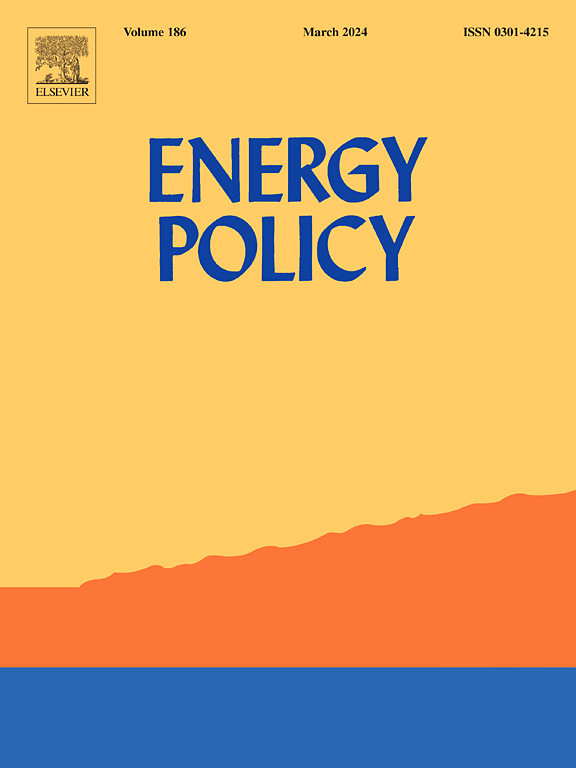Economic and policy assessment on nuclear energy for Latin America’s energy transition
IF 9.3
2区 经济学
Q1 ECONOMICS
引用次数: 0
Abstract
Latin America is projected to face significant energy deficits in the long term due to the increasing demand for electricity and the challenges surrounding the development of new energy infrastructure. While renewable sources, such as solar and wind, have shown remarkable progress, their intermittent nature and storage limitations prevent them from fully meeting the region’s growing energy needs. This paper explores the potential of nuclear energy to complement renewable sources, focusing on six target countries: Peru, Ecuador, Bolivia, Chile, Colombia, and El Salvador. We examine the techno-economic and policy factors that influence the deployment of nuclear power in the region, including the adoption of SMRs, which may offer more flexible and cost-effective solutions compared to large-scale nuclear power plants. We obtain deterministic LCOE values ranging from 70.88 USD/MWh to 158.57 USD/MWh according to different scenarios. In the case of Colombia, the implementation of fiscal incentives for non-conventional energy sources significantly reduces the financial leverage required for project development. Our analysis demonstrates that these incentives reduce financial leverage requirements from 65 % to 30 %, significantly enhancing the feasibility of nuclear energy projects in the region. Monte Carlo simulations were conducted to generate probability density functions (PDFs) for the LCOE of each country. We highlight the scarcity of academic and policy studies on nuclear electricity generation in Latin America, in contrast to other regions. The findings suggest that nuclear energy can be pivotal in securing a reliable, low-carbon energy future for Latin America. However, the lack of region-specific data, especially on CAPEX and OPEX, poses significant barriers to its implementation. The paper concludes with policy recommendations for Latin American governments to facilitate the integration of nuclear energy into their energy strategies, ensuring that it complements the growth of renewables and supports the transition to a low-carbon economy.
拉丁美洲能源转型中核能的经济和政策评估
由于对电力的需求不断增加以及围绕新能源基础设施发展的挑战,预计拉丁美洲长期将面临严重的能源短缺。虽然太阳能和风能等可再生能源取得了显著进展,但它们的间歇性和储存限制使它们无法完全满足该区域日益增长的能源需求。本文探讨了核能补充可再生能源的潜力,重点关注六个目标国家:秘鲁、厄瓜多尔、玻利维亚、智利、哥伦比亚和萨尔瓦多。我们研究了影响该地区核电部署的技术经济和政策因素,包括采用小型反应堆,与大型核电站相比,小型反应堆可能提供更灵活和更具成本效益的解决方案。根据不同的场景,我们得到确定性的LCOE值在70.88美元/兆瓦时到158.57美元/兆瓦时之间。就哥伦比亚而言,对非常规能源实施财政奖励大大降低了项目开发所需的财政杠杆。我们的分析表明,这些激励措施将财务杠杆要求从65% %降低到30% %,显著提高了该地区核能项目的可行性。通过蒙特卡罗模拟,为每个国家的LCOE生成概率密度函数(pdf)。我们强调,与其他地区相比,拉丁美洲缺乏关于核能发电的学术和政策研究。研究结果表明,核能可以在确保拉丁美洲可靠的低碳能源未来方面发挥关键作用。然而,缺乏特定地区的数据,特别是关于资本支出和运营支出的数据,对其实施构成了重大障碍。该报告最后为拉美各国政府提出了政策建议,以促进将核能纳入其能源战略,确保核能与可再生能源的增长相辅相成,并支持向低碳经济的过渡。
本文章由计算机程序翻译,如有差异,请以英文原文为准。
求助全文
约1分钟内获得全文
求助全文
来源期刊

Energy Policy
管理科学-环境科学
CiteScore
17.30
自引率
5.60%
发文量
540
审稿时长
7.9 months
期刊介绍:
Energy policy is the manner in which a given entity (often governmental) has decided to address issues of energy development including energy conversion, distribution and use as well as reduction of greenhouse gas emissions in order to contribute to climate change mitigation. The attributes of energy policy may include legislation, international treaties, incentives to investment, guidelines for energy conservation, taxation and other public policy techniques.
Energy policy is closely related to climate change policy because totalled worldwide the energy sector emits more greenhouse gas than other sectors.
 求助内容:
求助内容: 应助结果提醒方式:
应助结果提醒方式:


